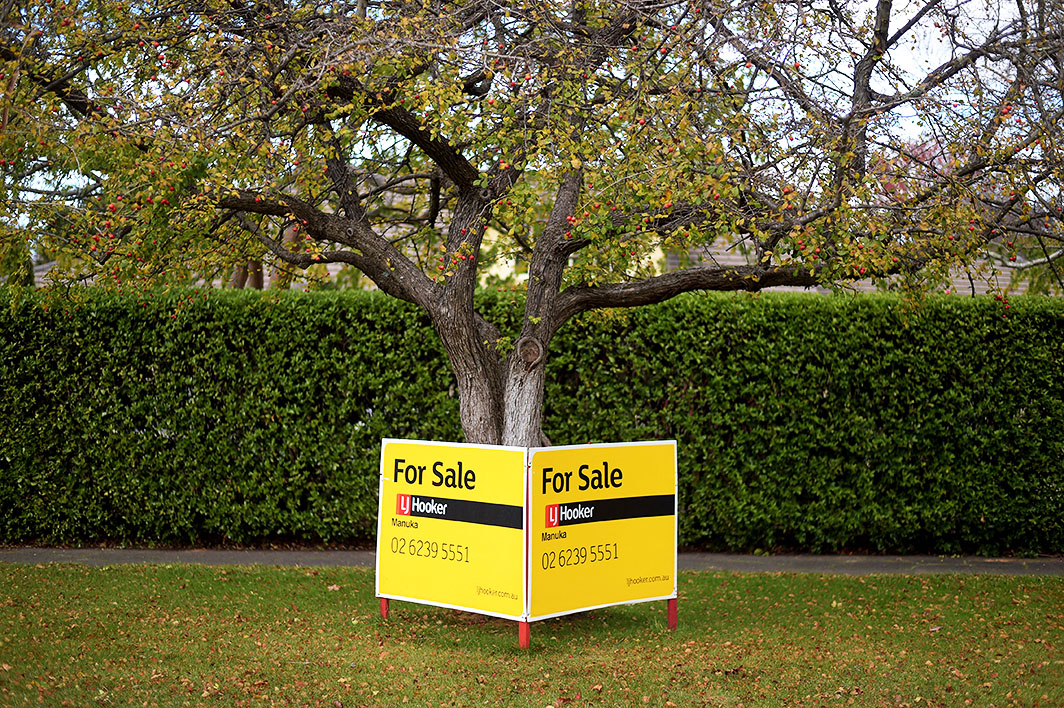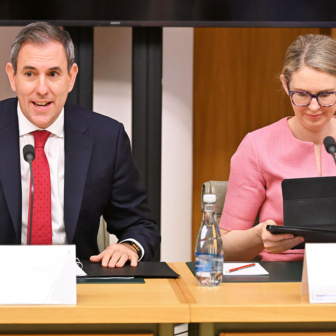If Labor wins the next federal election then we can expect changes to negative gearing and the capital gains tax discount. Despite the Coalition’s scare tactics, Labor’s 2016 campaign pledge to tilt the balance in the housing market “back towards first homebuyers” didn’t appear to do the federal opposition any electoral harm, and may even have boosted its vote. And housing affordability is probably an even bigger issue now than it was then: the latest polling by Essential Research suggests that only energy prices were of greater concern to Australians among economic issues.
But changes to negative gearing and the capital gains tax — the preserve of federal government policy — aren’t sufficient to make housing fairer and more sustainable. At least as important, according to analysis by the Grattan Institute, is reform of state taxes, and particularly the abolition of stamp duty and its replacement with broad-based property tax — something that is even more difficult to achieve politically.
Research released at the 2017 National Housing Conference in Sydney suggests that there is a way forward, though, given sufficient will. A new report on pathways to property tax reform published by the Australian Housing and Urban Research Institute, or AHURI, argues that a gradual transition from stamp duty to a property tax is possible without severely disrupting the housing market or disadvantaging home owners.
Change in this area is difficult because state governments — particularly those with booming house prices — are addicted to stamp duty. State and territory property taxes raised around $40 billion in 2014–15, or more than 10 per cent of all taxes collected in Australia.
But University of Tasmania political scientist Richard Eccleston, who led the AHURI research, says a recurrent property tax could raise the same amount of money as stamp duty. “This is not about increasing taxes, it’s about using a new and more efficient tax,” he told the Sydney conference.
Economists and housing experts generally agree that there are good reasons for using property tax rather than stamp duty to raise revenue.
First, stamp duty is levied at the point of purchase, when buyers, particularly first homebuyers, can least afford it, whereas a broad-based property tax is spread over time. A property tax also brings in more revenue as house prices rise and so captures a share of windfall gains that would otherwise accrue solely to home owners when, for example, government builds a train line, school or hospital that improves the amenity of an area and boosts their property values. It also means that taxes fall with house values, and so home owners pay less if their notional equity is reduced.
Second, the big up-front cost of stamp duty is a deterrent to moving house, making people less likely to move from areas of low to high employment or to take up positions where their skills are more effectively used. Speaking on the same panel at the AHURI conference, Grattan Institute researcher Brendan Coates said the really big benefits of a shift from stamp duty to property tax were productivity gains, which could be worth up to $17 billion a year.
Third, by lowering the cost of moving, the shift to a property tax could encourage more efficient use of housing. Empty-nesters may be more willing to move to smaller dwellings if downsizing doesn’t cost them tens of thousands of dollars in stamp duty.
Finally, property taxes give state governments a more predictable, stable and reliable revenue stream than stamp duties. While New South Wales and Victoria may be rolling in cash right now, if the housing bubble pops and the real estate market slows, then the rivers of gold could quickly slow to a trickle.
The question is not whether shifting from stamp duty to property tax is a good policy idea, the question is how to do it. Asking existing home owners to start paying property tax would seem like double taxation, since they paid stamp duty up-front when they bought their homes. Yet exempting them would create an even bigger disincentive to moving. “Grandfathering is bad for mobility,” Coates told the conference, “because it locks people into their current homes.”
Both Coates and Eccleston recommend a twenty-year transition from stamp duty to property tax — just like the process that has been under way in the Australian Capital Territory since 2012. It’s true that the transition is simpler there because the ACT government is also effectively the local government and can incorporate property taxes into council rates more easily than other states and territories. But such practical obstacles are not insurmountable.
The new AHURI report recommends a four-step process. Eccleston says the immediate first steps are to develop consistent methods for valuing residential property across all states and territories and to establish a national register of property valuations and ownership. The second, short-term step is to simplify stamp duty into a single flat rate of 6 per cent applying only above a significant threshold. Eccleston says this would benefit those 60 per cent of buyers purchasing property at the lower end of the market and transfer costs to those buying more expensive houses. The third, medium-term step is to add a stamp duty surcharge for investors and top-end buyers or increase the rate of stamp duty they pay. According to the report, this would “meet housing policy goals by dampening demand for investment properties and increasing home ownership rates.”
Converting stamp duty into a “single progressive system” in this way would provide the foundation for the fourth and final substantive reform: replacing stamp duty altogether with a recurrent property tax. Stamp duties would gradually fall over the twenty years, and property taxes would gradually increase. Eccleston’s study estimates that the annual rate of property tax needed to fully replace stamp duty on a median-priced dwelling in New South Wales or Victoria would be less than $1300. In Tasmania, the figure would be less than $500.
The transition from stamp duty to property tax requires national leadership and national coordination. Eccleston says the obvious precedent — in terms of process rather than outcomes — is the implementation of National Competition Policy under the Howard government. The Commonwealth should take a similar leadership role in relation to property taxes, he says, because it would be the main beneficiary of the resulting increase in economic growth and output. And only the Commonwealth has the capacity to put a deferred payments scheme in place to enable asset-rich but income-poor retirees to put off paying property tax until they sell their home, or to have those taxes paid out of their estate.
Richard Eccleston acknowledges that moving to what is “essentially a wealth tax based on property” is a political challenge, but says it’s not as hard as the obvious alternative, removing capital gains tax exemption on the family home.
Grattan’s Brendan Coates adds two more big measures to the housing tax wish list. The first is to include the value of the family home in the pension assets test, but only above a certain threshold (say $500,000). Not only might this encourage some older Australians to downsize, it would also save the government money and even up the pension treatment of home owners and renters.
Coates also wants to flatten progressive state land taxes. In terms of fairness, this might sound counterintuitive, but the aim is to encourage a shift in the private rental sector from “mum and dad” landlords to institutional investors. Coates makes the point that investors who only own one rental property often don’t make very good landlords, partly because they are scared of getting a bad tenant and not being able to kick them out, and partly because they want to be able to sell the property any time to cash in on the value of their asset. As a result, they don’t like to offer tenants long tenure.
Institutional landlords, by contrast, invest at scale, spreading the risk of a bad tenant across many dwellings. They are also seeking long-term rental returns ahead of capital gains. Under current arrangements, the rate of state-based land taxes rises with the value of property held, quite steeply in some cases. This significantly reduces the yield for institutions like superannuation funds and creates a disincentive for them to invest in the private rental market.
Politically convenient changes “are often ineffective or harmful,” notes Eccleston, while “meaningful reforms are generally politically difficult.” The major beneficiaries of a transition from stamp duty to property tax would be younger Australians buying their first home. “Do we have leaders with the courage to make that argument?” he asks.
With his own battle wounds from attempting significant tax reform, former Liberal leader John Hewson has his doubts. “Politics is even more short-term, populist and opportunistic than in my time,” he told the same conference session. “It is hard to imagine a serious and sustained debate about any aspect of public policy.”
Changing the way housing is taxed wouldn’t necessarily have a huge impact on housing affordability, but it should make it easier for younger homebuyers to enter the market. It would also help to boost growth, deal with budget challenges and reduce inequality, and so make the entire system fairer and more sustainable. As Hewson told the conference, continuing to push such problems further down the road is “basically intergenerational theft.” ⦁




